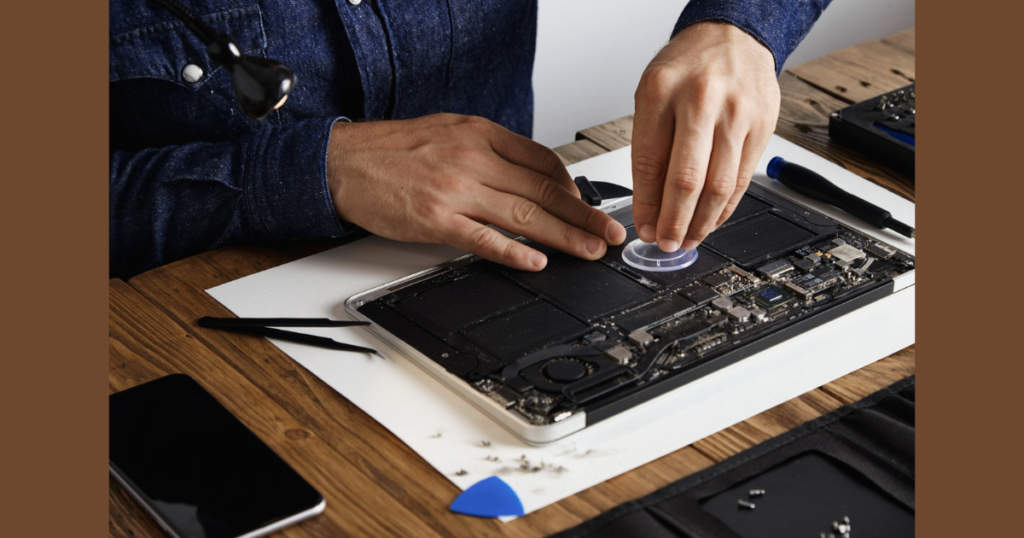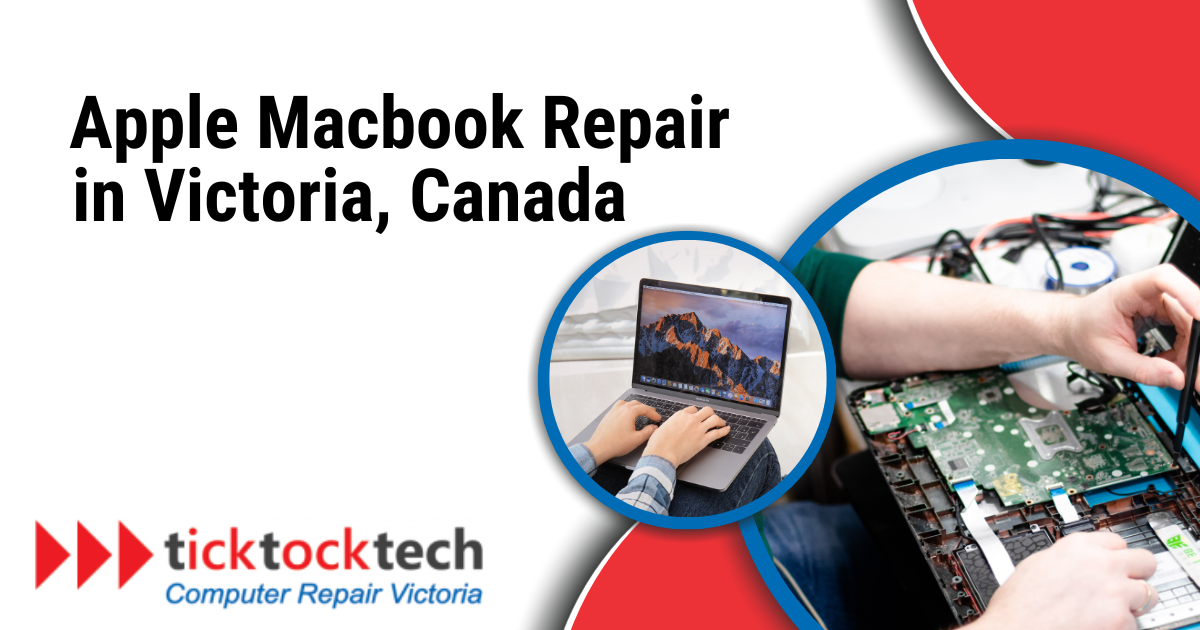Your trusty MacBook is a vital part of your work or personal life. It helps you stay connected, productive, and entertained. But what happens when something goes wrong? Whether it’s a cracked screen, a faulty keyboard, or a software issue, a broken MacBook can be a major inconvenience. That’s where Apple MacBook repair comes in. When your MacBook needs fixing, there are a few different options available to you. You can take it to an Apple Store or an authorized Apple service provider around you.
No matter where you choose to have your MacBook repaired, it’s important to do your research and choose a reputable provider. You want to make sure that your MacBook is in good hands and that the repairs will be done to a high standard.
In this guide, we’ll cover everything you need to know about Apple MacBook repair. We’ll discuss the different types of repairs that are available, how to troubleshoot common MacBook problems, and how to find a reputable repair service provider.
Types of MacBook Repairs
Repairing your MacBook can involve multiple individual repair processes. These processes can be broadly classified into hardware repairs and software repairs.
Hardware repairs
Hardware repairs involve fixing physical components of the MacBook, such as the screen, keyboard, battery, or logic board.
- Screen repair or replacement: This is one of the most common MacBook repairs, as screens can be easily cracked or damaged.
- Keyboard repair or replacement: MacBook keyboards can also be easily damaged, especially the butterfly keyboards on older models.
- Battery replacement: MacBook batteries typically last for 3-5 years, but they can degrade over time. If your MacBook battery is no longer holding a charge, you may need to have it replaced.
- Logic board repair: The logic board is the main circuit board in the MacBook, and it contains many of the MacBook’s most important components. Logic board repairs are typically complex and expensive, but they may be necessary if the logic board is damaged.
Software repairs
Software repairs involve fixing problems with the MacBook’s operating system or other software applications.
Some common software repairs include:
- Operating system repair: Suppose your MacBook is experiencing software problems, such as crashing or freezing. In that case, you may need to have the operating system repaired.
- Data recovery: If you accidentally delete data from your MacBook, or if your MacBook hard drive fails, you may be able to recover the data using a data recovery service.
- Virus removal: If your MacBook is infected with a virus, you will need to have the virus removed to protect your data and your other devices.
If you are unsure what type of repair your MacBook needs, it is best to take it to a qualified repair technician for diagnosis.
How to troubleshoot and repair common MacBook problems

Let’s quickly review some tips on how to troubleshoot common MacBook problems:
Black screen
In a case where your MacBook screen suddenly turns black, try restarting your MacBook. If the screen is still black, try resetting the SMC (System Management Controller). To do this, shut down your MacBook and then press and hold Shift + Control + Option + Power for 10 seconds. Then, release the keys and turn on your MacBook.
Flickering screen
Generally, restarting the MacBook resolves this issue. If the screen is still flickering, try resetting the NVRAM (Non-Volatile Random-Access Memory). To do this, shut down your MacBook and then press and hold Command + Option + P + R immediately after turning on your MacBook. Keep holding the keys until you hear the startup chime twice.
Cracked screen
If your MacBook screen is cracked, you will need to have it repaired or replaced. You can take your MacBook to an Apple Store, an authorized Apple service provider, or an independent repair shop.
Battery not charging
If your battery isn’t charging, attempting an SMC reset might resolve the issue. To do this, shut down your MacBook and then press and hold Shift + Control + Option + Power for 10 seconds. Then, release the keys and turn on your MacBook.
Battery not lasting long
Suppose your MacBook battery does not last long; you can try calibrating the battery. To do this, fully charge your MacBook battery and then use it until it dies. Then, charge the battery again without interruption. You should repeat this process about three times to calibrate the battery.
Computer crashing or freezing
The System Management Controller (SMC) is a crucial component in your Mac, responsible for various tasks like managing the battery and keyboard backlight.
If your Mac experiences freezing issues, resetting the SMC might be the solution.
The steps to reset the SMC depend on whether your Mac has a T2 Security Chip. If your Mac is a MacBook without a T2 chip (meaning it’s a 2016 or older MacBook Pro or a different model), shut it down.
Next, simultaneously press and hold the Shift, Control, Option, and power buttons for 10 seconds. Release all the keys and then press the power button to restart your Mac.
For Mac desktops without a T2 chip, like an iMac, power off the computer, unplug the power cord for 15 seconds, plug it back in, and then turn on your Mac.
If your Mac has a T2 chip, the process differs. For both MacBook and desktop Macs with a T2 chip, power off the device, press and hold the power button for 10 seconds, release it, wait a few seconds, and then press it again to turn on your Mac.
Here are some additional tips for troubleshooting common MacBook problems:
- Try restarting your MacBook in Safe Mode. This can help to diagnose and fix software problems.
- Check your MacBook’s system logs for errors. This can help you to identify the root cause of a problem.
- Use Google or other search engines to search for solutions to specific problems. There are many helpful resources available online.
If you are unsure how to troubleshoot a particular problem, it is always best to consult a qualified repair technician.
How to find a reputable MacBook repair service provider
Finding a good and reputable repair shop for your MacBook repair is simple once you know what to look for.
Let’s quickly review some tips you should consider before choosing a MacBook repair service.
Ask for recommendations from friends, family, or colleagues
If you know anyone who has had their MacBook repaired recently, ask them for recommendations. They may be able to tell you about a good repair shop that they had a positive experience with.
Read online reviews
Once you have a few potential repair shops in mind, read online reviews to see what other customers have said about their experiences. Pay attention to both positive and negative reviews, and look for common themes.
Make sure the repair shop is certified by Apple
Apple-certified repair shops have been trained and authorized by Apple to repair MacBook devices. They use genuine Apple parts and tools, and they offer a warranty on their repairs.
Get a written estimate before any repairs are made
This will help you to avoid any surprises down the road. Be sure to ask about the cost of parts, labor, and any other fees.
Trust your gut
If you feel uncomfortable with a particular repair shop, don’t hesitate to go elsewhere. There are many reputable MacBook repair shops out there, so you should be able to find one that you feel comfortable with.
Here are some additional tips to keep in mind:
- Beware of repair shops that offer very low prices: It is unlikely that a repair shop can offer high-quality repairs at a very low price. This is because genuine Apple parts and tools are not cheap.
- Be wary of repair shops that pressure you to get your MacBook repaired immediately. A reputable repair shop will give you time to consider your options and get a written estimate before any repairs are made.
- Don’t be afraid to ask questions. A reputable repair shop will be happy to answer any questions you have about the repair process or the cost of repairs.
Wrapping Up: Apple MacBook Repair in Victoria, Canada
MacBook repairs can be expensive and time-consuming, but they are often necessary to keep your MacBook running smoothly. With a little bit of luck and by following the troubleshooting tips we’ve discussed, you can help extend the life of your device and reduce the need for repairs.
Apple-certified repair shops are trained and officially endorsed by Apple to provide repair services for MacBook devices. When seeking trusted Apple-certified repair services in Victoria, Canada, look no further than your favorite computer repair company, TickTockTech.

